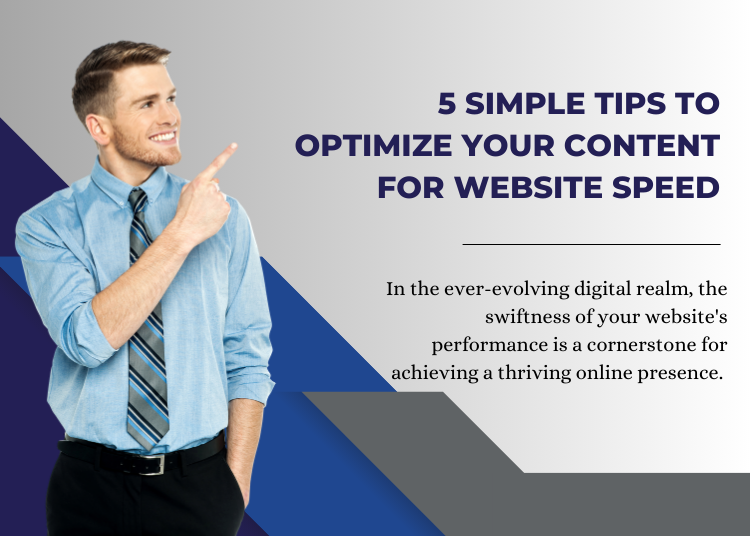In the ever-evolving digital realm, the swiftness of your website’s performance is a cornerstone for achieving a thriving online presence. A website that lags can irk your visitors and elevate bounce rates, potentially denting your search engine rankings. Given this, prioritizing optimizing your website’s speed emerges as a paramount task. In the following sections, we’ll explore five practical strategies to enhance your website’s content for speed, delivering an effortlessly smooth user experience.
Compress and Optimize Images
Images often constitute the most significant elements on a webpage, and unoptimized images can significantly slow down your website. To address this issue, consider implementing the following practices:
a. Image Compression: Make the most of image compression tools to efficiently reduce the file size of your images while preserving their high quality. Some well-known image compression options worth considering are TinyPNG, JPEGoptim, and ImageOptim.
b. Correct Image Dimensions: Ensure that your images have dimensions that match what’s displayed on your webpage. Avoid oversized images and employ responsive design techniques to serve appropriately sized images for various devices.
c. Image Formats: Choose the most suitable image format for the job. JPEG is ideal for photographs, while PNG or SVG works well for transparent images. Avoid using BMP or TIFF formats, which are larger and slower to load.
Minimize HTTP Requests
Every component on your webpage, including images, scripts, and stylesheets, initiates an HTTP request. Minimizing the volume of these requests can lead to a substantial improvement in your website’s speed:
a. Combine CSS and JavaScript Files: Combining your CSS and JavaScript files into a single file reduces the number of requests the browser has to handle.
b. Use Asynchronous Loading: Whenever possible, load scripts asynchronously. This ensures the page doesn’t need to wait for a script to load before rendering, thus improving the user experience.
c. Lazy Load Images and Videos: Implement lazy loading for images and videos. This means these elements are only loaded when entering the user’s viewport, reducing initial page load times.
Leverage Browser Caching
Browser caching enables frequently used resources to be stored locally in a user’s browser, reducing the need to re-download them with each visit. To set up browser caching:
a. Configure Cache Headers: Adjust cache headers on your server to specify how long resources should be cached in the user’s browser. Set reasonable expiration times to ensure returning visitors benefit from cached resources.
b. Use Content Delivery Networks (CDNs): CDNs distribute your website’s assets across multiple servers, diminishing server load and enhancing page load times for users closer to CDN servers.
Optimize CSS and JavaScript
Streamlining your CSS and JavaScript code can make a significant difference in website speed:
a. Minify Your Code: Eliminate unnecessary white spaces, comments, and line breaks from your CSS and JavaScript files. Various minification tools are available, such as UglifyJS and CSSNano.
b. Reduce HTTP Requests: Inline critical CSS or load it asynchronously. This lets your website quickly render critical content while non-essential styles can load in the background.
Choose a Fast Web Hosting Provider
The web hosting provider you select can have a substantial influence on the speed of your website:
a. Opt for SSD Storage: Solid-state drives (SSDs) outpace traditional hard disk drives (HDDs) and can significantly enhance server response times
b. Consider Content Delivery Networks (CDNs): Many web hosting providers offer integrated CDN services, which can distribute your content geographically and reduce loading times for users worldwide.
In conclusion, optimizing your website for speed is vital for providing an excellent user experience and achieving improved search engine rankings. Following these five essential tips can significantly enhance your website’s load times, ensuring visitors remain engaged and satisfied with their browsing experience. Remember that website speed is an ongoing concern, so regularly monitor your site’s performance and adjust as needed to keep it running smoothly.
